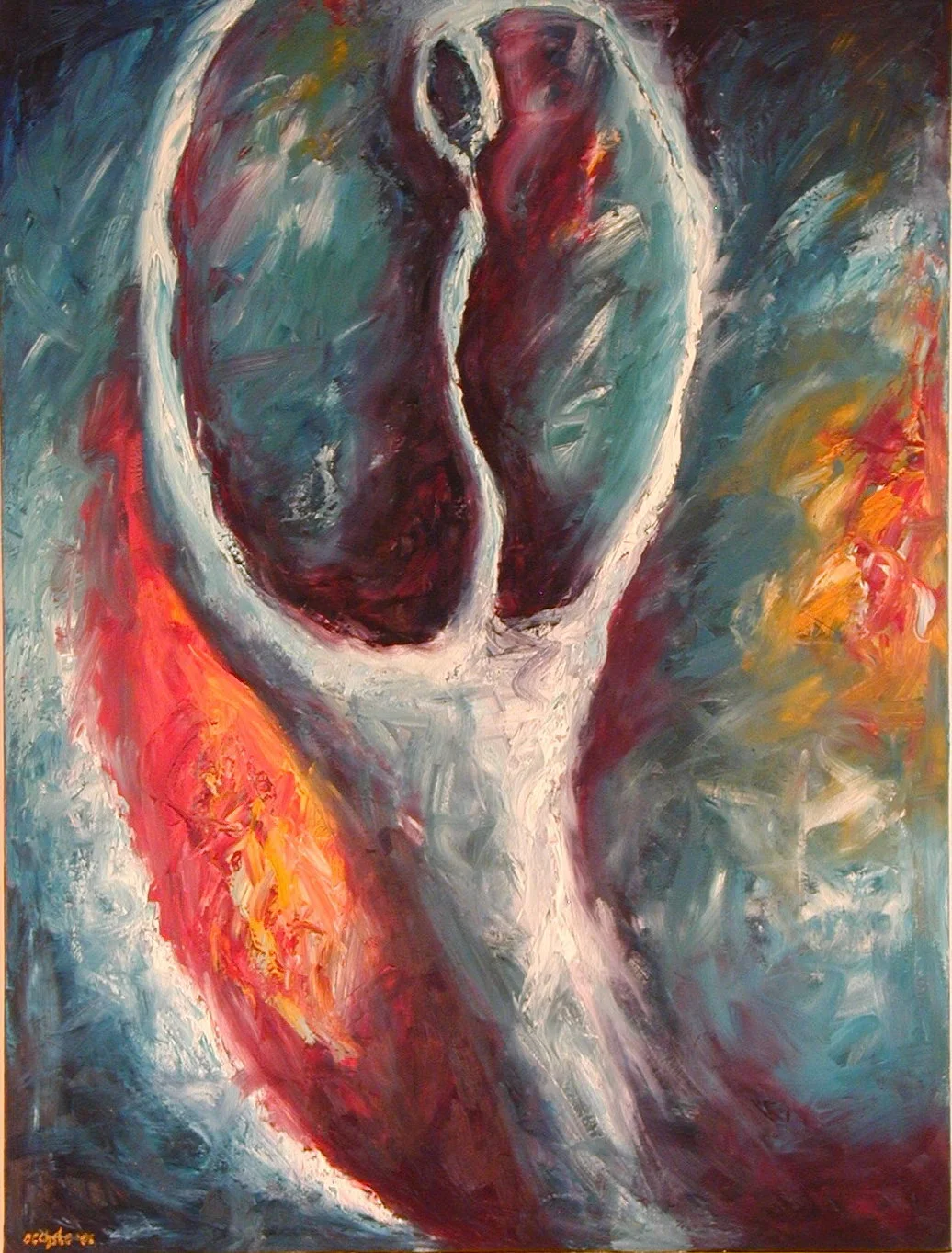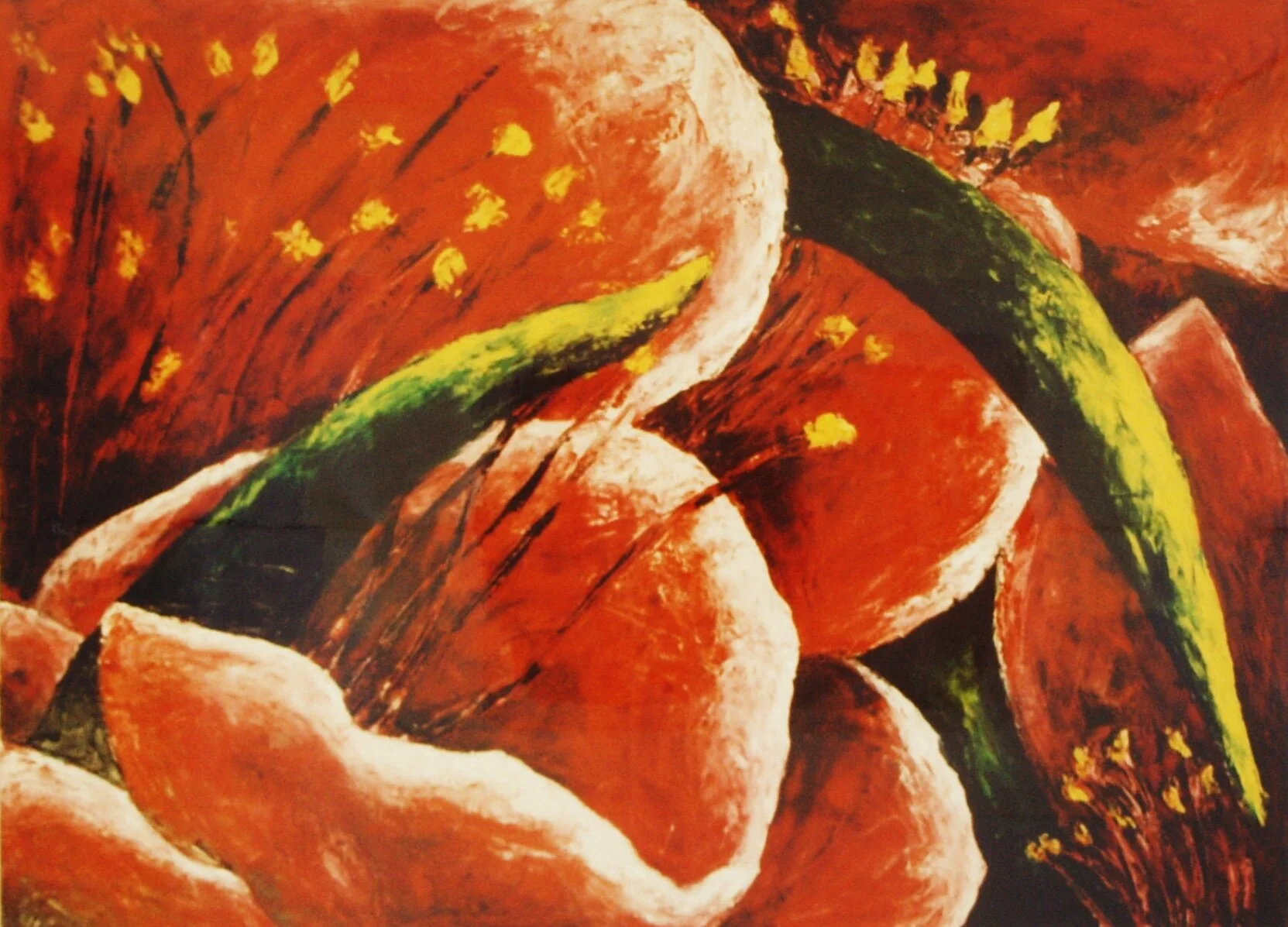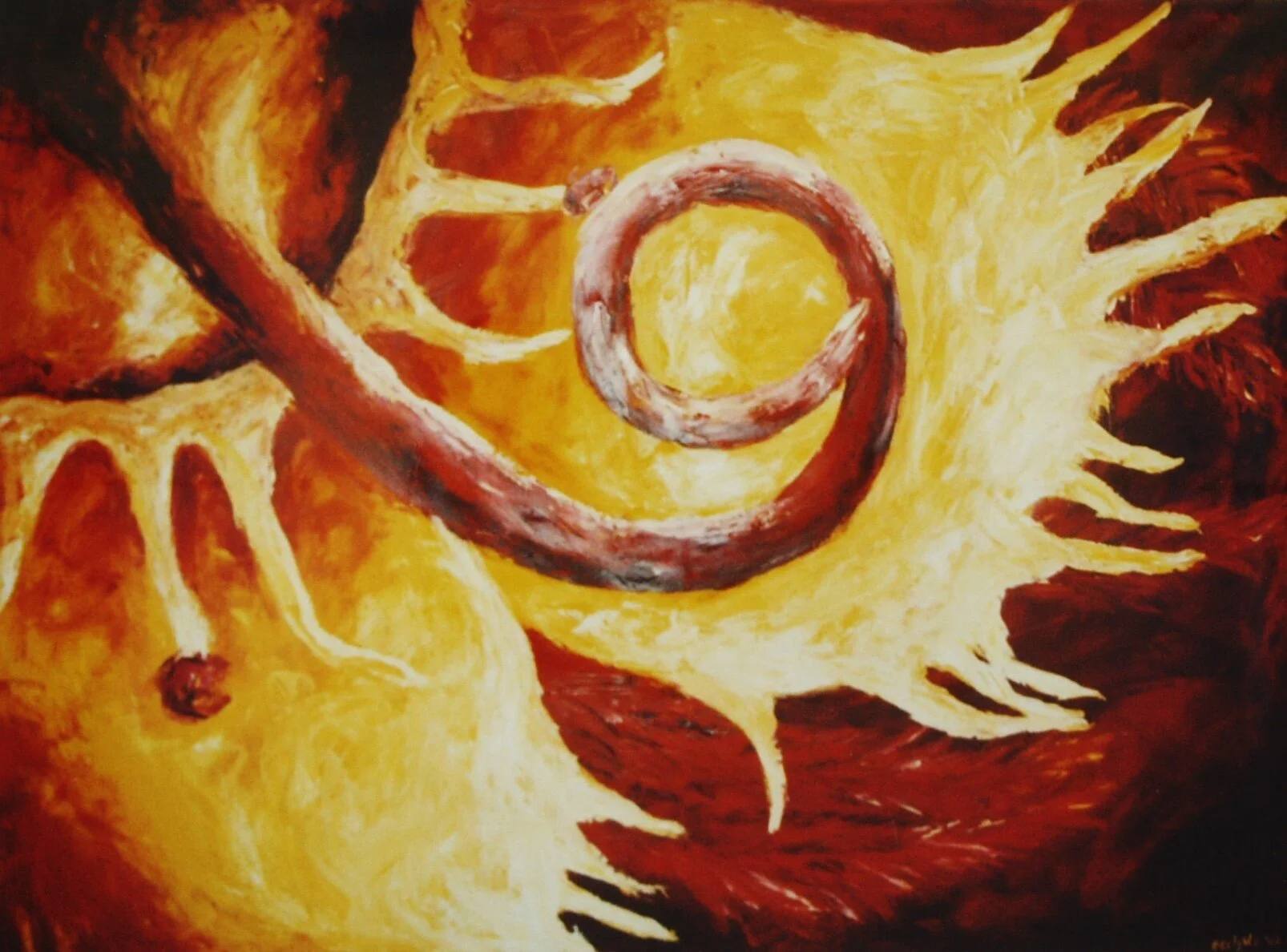
Magnispectives
"Magnispectives" is a collection of paintings based on organic forms found in nature, such as corals, shells and flowers. However, rather than looking solely at the external features of the subject, my aim is to reveal their inner beauty.
There is a relationship between the forms found in plants and animals and those that are found in the human body. By painting these normally tiny objects on a large scale, it is possible to create a connection between the viewer and the object in the painting, as people tend to associate the forms with their own bodies. Many of the paintings have a sensual feel to them which reflects the nature of the subject such as corals, which move with the flow of water or the beautiful, rounded forms found within a flower.
Through this link that people feel between the forms in the paintings and themselves, it is possible to raise people's awareness of their environment and the creatures that inhabit it.
Dendrophyllia IV
A marine worm is being drawn down into the stomach cavity to be digested.
Oil on canvas, 1.2m x 1.5m, 2001 $1,200
Giant Acorn Barnacle, Pink
Oil on canvas, 80cm x 70cm, 2001 SOLD
Giant Acorn Barnacle
Oil on canvas, 70cm x 1m, 2001 $700
Lasiandra II
Oil on canvas, 1m x 1m, 2001 SOLD
Paeonia suffruticosa cultivar I
Oil on canvas, 1m x 1m, 2001 SOLD
Serpulid
The fans on the serpulid’s mouth opening are controlled by a network of muscles, which are triggered by highly sensitive nerve fibres that react instantly to pressure and light.
Oil on canvas, 1m x 1m, 2001 $500
Lasiandra IV
Oil on canvas, 1m x 1m, 2002 SOLD
Giant tube worm (Protula sp.)
The giant tube worm generally inhabits depths from 3 to 25 metres where its calcareous tube is buried in coral rubble or located between dead coral rock. It feeds both during the day and night on plankton and suspended sediment which is trapped in its radioles which extend some 100 millimetres out into the current from the tube entrance.
Oil on canvas, 1m x 1m, 2001 SOLD
Bisected Shell I
Oil on canvas, 90cm x 1.2m, 2001 $500
Bisected Shell II
Oil on canvas, 90cm x 1.2m, 2001 $500
Heteractis magnifica
Heteractis magnifica is an anemone, which requires bright sunlight to allow the millions of single-celled plants contained within its tissues, known as zooxanthellae, to live and photosynthesize.
Oil on canvas, 75cm x 75cm, 2001 $350
Tubastrea aurea
The expanded polyps of the sunshine coral, Tubastrea aurea, are quite large being 15 to 20 millimetres or more across and dramatic in colour.
Oil on canvas, 80cm x 80cm, 2001 $400
Tulipa hybrid (Queen of the Night Tulip)
Oil on canvas, 80cm x 80cm, 2001 SOLD
Atlantic Zoanthid
The tropical Atlantic zoanthid anemones withdraw their tentacles during the day. At night their tentacles extend to trap the clouds of rising plankton.
Oil on canvas, diptych, 1.5m x 75cm, 2001 $500
Dendrophyllia III
A cup coral, Dendrophyllia is carnivorous and zooplankton forms the basis of its diet. Once trapped, the zooplankton is passed by the tentacles into the mouth opening and down into the stomach, where secretions from the mesenteries rapidly digest the food.
Oil on canvas, 80cm x 70cm, 2001 $450
Lisianthus (hybrid)
Oil on canvas, 1m x 80cm, 2002 $800
Paeonia suffruticosa cultivar II
Oil on canvas, 50cm x 1.5m, 2002 SOLD
Dendrophyllia II
Oil on canvas, diptych, 60cm x 30cm, 2001 $250
Lasiandra I
Oil on canvas, 1.2m x 1.5m, 2001 SOLD
Hypocalymma robustum (The Swan River Myrtle)
A common small shrub found in the Darling Ranges and western coastal plains. This shrub begins flowering in winter.
Oil on canvas, 1.37m x 1m, 2001 SOLD
Verticordia etheliana (feather-flower)
This species is a shrub, approx. 50cm tall. It is at its best in Sept/Oct. north and north-east of Geraldton. These flowers are often referred to as feather flowers, due to the fringed and feathery structure.
Oil on canvas, 1.37m x 1m, 2001 SOLD
Lasiandra III
Oil on canvas, 80cm x 1.2m, 2001 $500





















